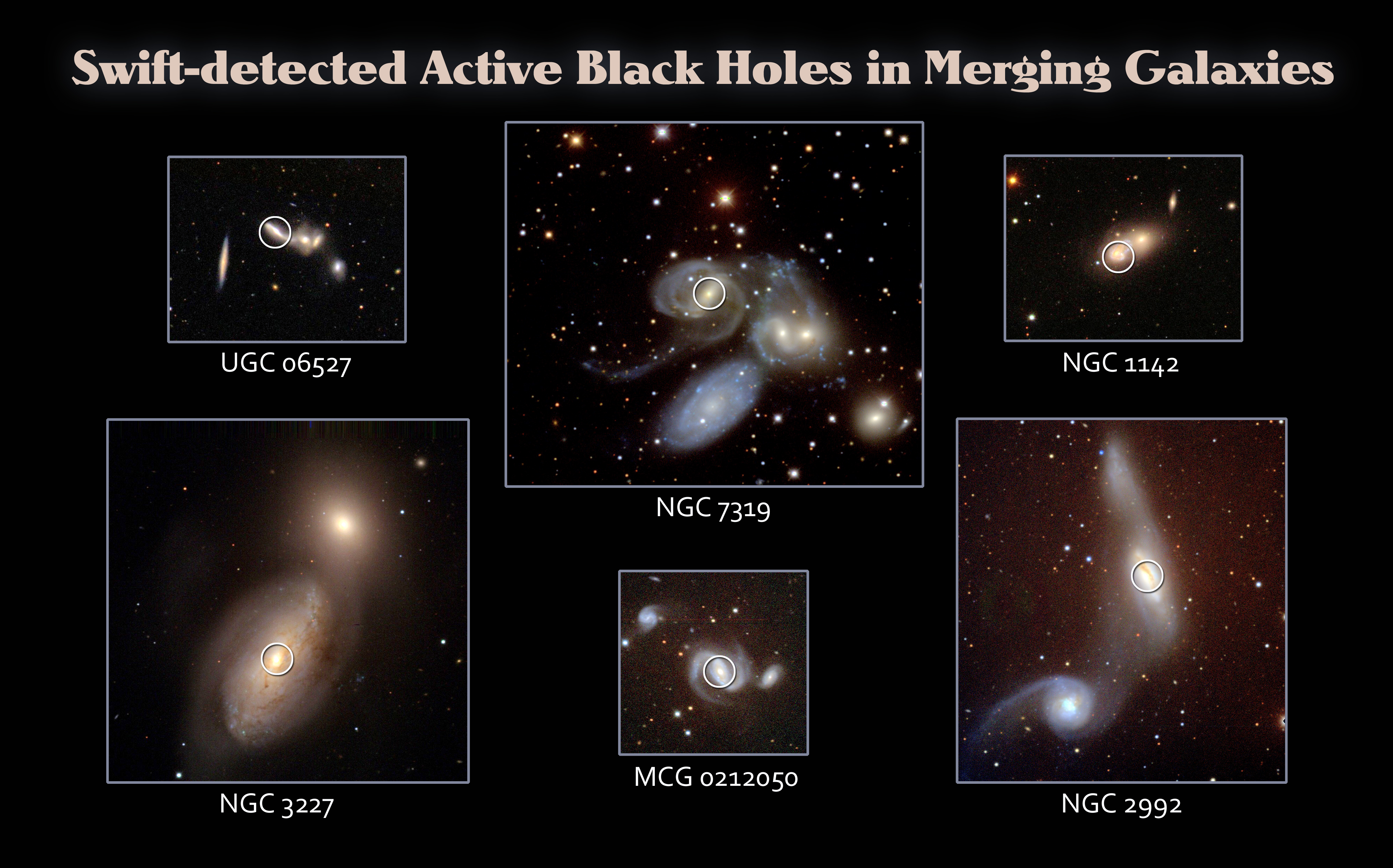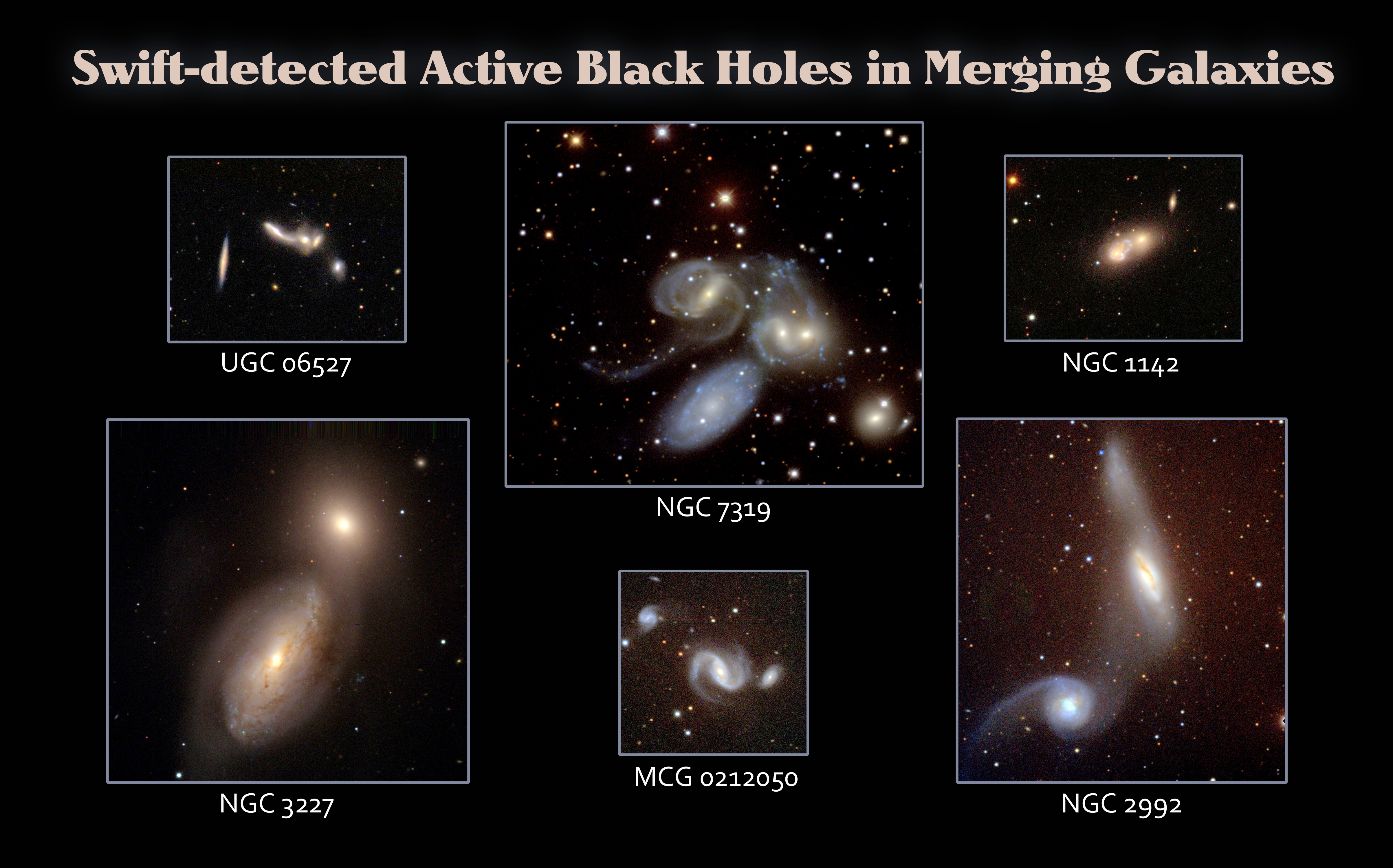Universe
ID: 10549
Astronomers using X-ray data from an ongoing survey by NASA's Swift satellite have solved a decades-long mystery. Why, when most galaxies host giant black holes in their centers, do only about one percent of them emit vast amounts of energy?


Swift Survey Finds 'Smoking Gun' of Black Hole Activation
The new findings confirm that the black holes "light up" when galaxies collide — and may offer insight into the future behavior of the black hole in our own galaxy.
The intense emission from galaxy centers, or nuclei, arises near a supermassive black hole containing between a million and a billion times the sun's mass. Giving off as much as 10 billion times the sun's energy, some of these active galactic nuclei (AGN) — a class that includes quasars and blazars — are the most luminous objects in the universe.


For More Information
Credits
Scott Wiessinger (UMBC): Video Editor
Scott Wiessinger (UMBC): Producer
Michael Koss (University of Maryland): Scientist
Richard Mushotzky (University of Maryland): Scientist
Francis Reddy (University of Maryland College Park): Lead Science Writer
Francis Reddy (University of Maryland College Park): Graphics
Scott Wiessinger (UMBC): Producer
Michael Koss (University of Maryland): Scientist
Richard Mushotzky (University of Maryland): Scientist
Francis Reddy (University of Maryland College Park): Lead Science Writer
Francis Reddy (University of Maryland College Park): Graphics
Please give credit for this page to:
NASA/Goddard Space Flight Center. However, each image should be credited as indicated above.
NASA/Goddard Space Flight Center. However, each image should be credited as indicated above.
Short URL to share this page:
https://svs.gsfc.nasa.gov/10549
Mission:
Swift
Data Used: Note: While we identify the data sets used in these visualizations, we do not store any further details nor the data sets themselves on our site.
This item is part of this series:
Astrophysics Simulations
Goddard TV Tape:
G2010-139 -- Various Small Astrophysics projects
Keywords:
SVS >> Galaxy
SVS >> HDTV
DLESE >> Space science
SVS >> Black Hole
SVS >> Active Galaxy
SVS >> Astrophysics
SVS >> Universe
SVS >> Space
SVS >> Swift
SVS >> Active Galactic Nucleus
NASA Science >> Universe
https://svs.gsfc.nasa.gov/10549
Mission:
Swift
Data Used: Note: While we identify the data sets used in these visualizations, we do not store any further details nor the data sets themselves on our site.
This item is part of this series:
Astrophysics Simulations
Goddard TV Tape:
G2010-139 -- Various Small Astrophysics projects
Keywords:
SVS >> Galaxy
SVS >> HDTV
DLESE >> Space science
SVS >> Black Hole
SVS >> Active Galaxy
SVS >> Astrophysics
SVS >> Universe
SVS >> Space
SVS >> Swift
SVS >> Active Galactic Nucleus
NASA Science >> Universe











